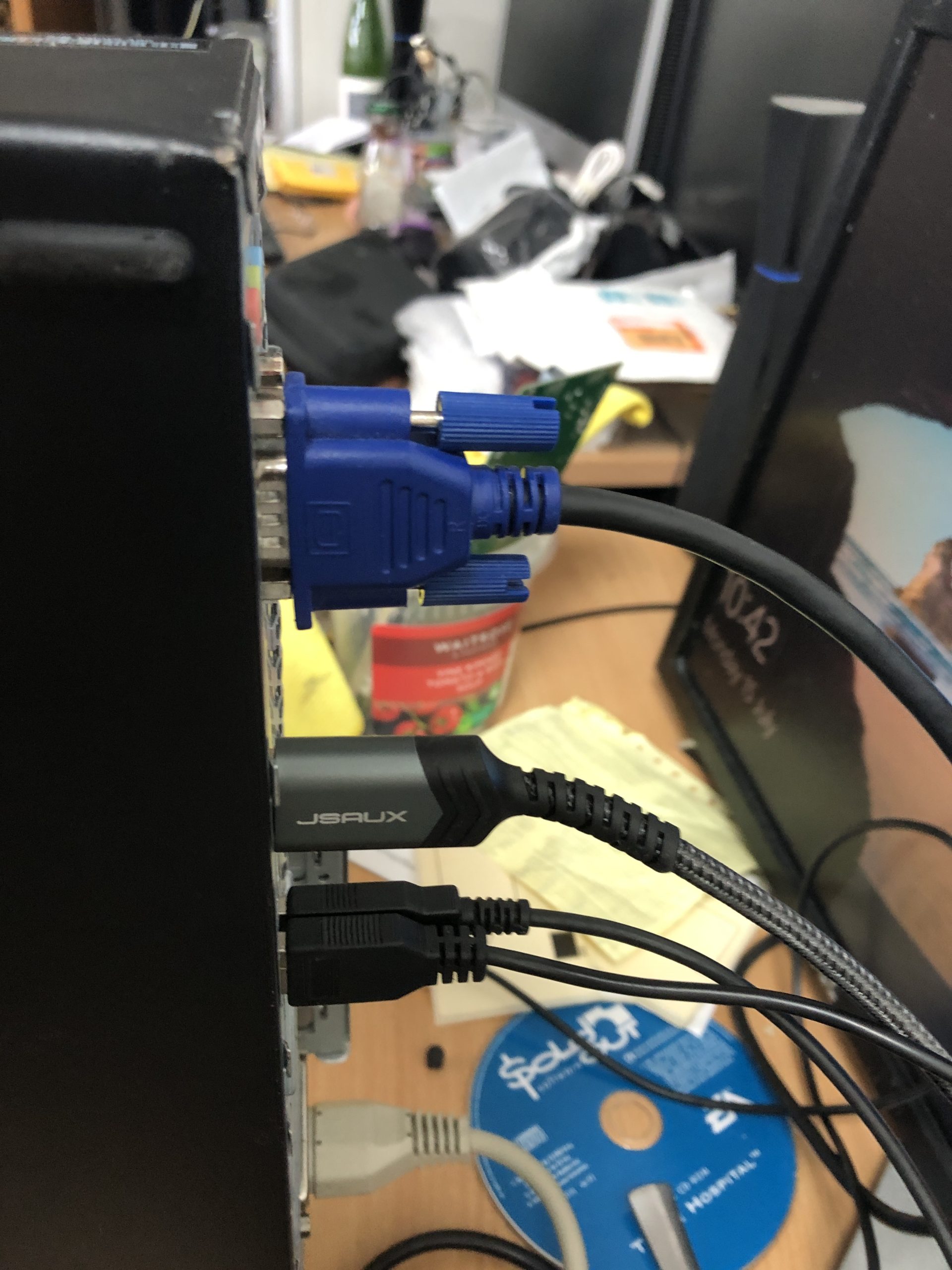What to Do with a Broken Monitor: Options, Insights, and Creative Solutions
Introduction
In an age where technology dominates our daily lives, monitors have become essential tools for work, entertainment, and education. When a monitor breaks, it can feel like a significant loss, both financially and functionally. In this blog post, we will discuss the various options available to you if you find yourself in possession of a broken monitor—like the unfortunate case of a Dell U2422HE purchased from CeX for £55, which sustained damage on the way home. Rather than simply discarding your broken monitor, there are several creative and beneficial avenues to explore, from repairs and selling components to recycling and donating it. Let’s dive into these options in more detail.
Assessing the Damage
Before taking any action, it’s crucial to assess the situation thoroughly. In the case of a broken monitor, you’ll want to ascertain the extent of the damage and whether it affects the monitor’s functionality. In the Reddit post mentioned, the owner states that the LED screen is damaged but still functions. Here are a few things you can check:
1. Screen Condition
- Cracks and Scratches: Look for any visible physical damage to the screen. Cracks can severely impair usability, even if the screen is technically operational.
- Color Distortion: If certain colors do not display correctly, it may be a sign of deeper problems within the display panel.
- Dead Pixels: Check for any small spots on the screen that do not display an image or color.
2. Connectivity
- Ports: Ensure that the HDMI, DisplayPort, and USB ports are still intact. Testing these connections can give you an idea of the monitor’s overall condition.
- Cables: Sometimes, the issue could be with faulty cables. Test with different cables to rule out this possibility.
Exploring Repair Options
DIY Repair
If you feel up to the challenge, repairing the monitor yourself could be a rewarding venture. While the individual in the Reddit post mentioned that they are unsure of how to replace the LED screen, there are numerous tutorials available online.
Steps to Consider:
- Research Replacement Parts: Identify the exact components needed for the repair. Websites like eBay, AliExpress, and Amazon are good starting points for sourcing parts.
- Gather Tools: Basic tools like screwdrivers, plastic prying tools, and anti-static wristbands can help you safely disassemble the monitor.
- Follow Tutorials: YouTube has a wealth of repair videos available. Simply search for “how to replace a Dell U2422HE screen”.
Risks Involved: However, keep in mind that DIY repairs carry inherent risks, especially if you are unfamiliar with electronic components. Additionally, improper handling can void any warranty that may still apply.
Professional Repair Services
If you would rather leave it to the experts, consider contacting local repair shops. Depending on the extent of the damage, the cost of professional repairs could range anywhere from £50 to £150.
- Pros: Professionals will likely source the correct parts, and their experience can save you time and effort.
- Cons: The repair cost might exceed the value of a new replacement monitor, thus making this option less appealing.
Selling for Parts
If you decide that repair is not a viable option, selling the monitor for parts might be the next best step. This is especially practical if the monitor’s other components, such as the casing, stand, or internal circuit boards, are still in good working condition.
How to Sell:
- eBay: Create a listing highlighting the model and current condition of the monitor. Be honest about the damage while emphasizing the operational parts.
- Facebook Marketplace: This platform allows for more localized selling and eliminates shipping costs.
- Specialty Forums: Websites like Reddit or tech forums can be an excellent venue for selling tech parts to enthusiasts.
Pricing Strategy
Research to see what similar broken monitors or their respective parts are selling for. Typically, broken monitors can sell for 25-50% of their original value, depending on demand and condition.
Recycling as an Eco-Friendly Alternative
If selling the monitor seems cumbersome or the parts are not in demand, consider recycling it. Many electronics contain materials that can be harmful to the environment if disposed of improperly.
Local E-Waste Recycling Programs
Contact local waste management authorities to see if they have special e-waste collection days or facilities. These programs exist to prevent toxins from electronics from contaminating the environment.
Manufacturer Take-Back Programs
Some manufacturers offer take-back programs where they will recycle devices for free or for a small fee. Dell, for instance, has an excellent program that allows customers to send back their broken or unwanted tech. Check your manufacturer’s return policy for specifics.
Donating the Monitor
If the monitor is still somewhat functional, consider donating it. Many schools, community centers, and non-profit organizations often seek donations of working electronics.
Benefits of Donating
- Community Impact: Your broken monitor could serve educational purposes or assist individuals who cannot afford newer technology.
- Tax Deduction: Documenting the donation can enable you to take advantage of any potential tax deductions as well.
Finding the Right Recipient
Reach out to local schools, libraries, or churches to see if they accept electronic donations. Websites such as TechSoup help connect organizations with donors.
Upcycling and Creative Uses
If you’re feeling especially crafty, a broken monitor can be upcycled into something entirely new. Here are a few creative ideas for transforming your broken monitor:
1. Digital Photo Frame
Use the LCD panel to create a digital photo frame. If the damaged areas do not affect the usability of the screen, you can program it to display a slideshow of your favorite images.
2. Art Projects
Turn the monitor into a unique art piece. Use the casing to create a shadow box or integrate the components into a sculpture that showcases the beauty of technology.
3. Gaming Monitor
If the monitor is partially functional—you might have to accept that it has limitations—some gamers have been able to repurpose damaged monitors as secondary or peripheral screens for gaming console setups.
Learning and Growth
Taking the time to examine your broken monitor further provides various avenues for learning and personal growth. Whether mastering new DIY skills, studying how to recycle responsibly, or exploring the world of electronics commerce, these experiences can deliver value far beyond the broken device itself.
Conclusion
A broken monitor doesn’t have to equate to wasted money or a digital relic gathering dust in your corner. You have several options ranging from repair, parts selling, recycling, donating, or even upcycling into something creatively new. By weighing the pros and cons of each option and leveraging the resources available to you, you can not only recover some of your investment but also contribute positively to the community or the environment. Embrace the journey ahead, and learn more about the full lifecycle of your technology!
Share this content:




This is a fantastic and comprehensive guide on dealing with a broken monitor! I appreciate how you’ve highlighted the balance between potential repair options and environmentally conscious decisions. One suggestion to consider is exploring partnerships with local repair cafes or community maker spaces. These venues often host events where volunteers help individuals fix their electronics, and they might even have the tools and expertise needed for a DIY repair, turning it into a community learning experience.
Additionally, if opting for upcycling, there’s a growing trend of using old technology in educational workshops. Perhaps organizing or participating in an event where people can learn to create digital art frames or project displays using broken monitors could inspire creativity while also promoting sustainability.
Lastly, if selling parts, it might be worth mentioning platforms like Decluttr or Gazelle, which focus specifically on technology trade-ins, facilitating a hassle-free selling experience for those who prefer a straightforward process. Thank you for such an enlightening post—it’s a great reminder that even broken tech can still contribute positively to our lives and community!
Response from Technical Support
Hi there,
Thank you for sharing your insightful article on what to do with a broken monitor! It’s great to see a comprehensive guide that covers multiple aspects of this common issue.
If you’re facing a broken monitor, the first step is indeed to assess the damage, as you mentioned. Here’s a quick checklist and some additional tips that might help:
Detailed Checklist for Assessing Damage
Repair and DIY Considerations
If you decide to go the DIY route, it’s beneficial to familiarize yourself with common repair techniques specific to the model you’re handling. Some additional resources include:
<
Response from Technical Support
Thank you for sharing your detailed insights on what to do with a broken monitor! It’s always a challenging situation when technology fails, but your article offers a variety of constructive options, from assessing damage to exploring repair choices and eco-friendly disposal. Here at our support team, we would like to add a few specific tips you might find helpful:
Understanding Warranty Coverage
If your monitor is relatively new, check if it is still under warranty. Often, manufacturers like Dell have warranty services that can address certain types of damage, sometimes even shipping your monitor directly to them for repair at no cost.
Specific Troubleshooting Steps
When assessing the condition of your monitor, try connecting it to a different computer or using a different video cable to rule out issues with your device or cables. Additionally, ensure that your graphics card drivers are updated, as this can occasionally resolve display issues.
Resources for Learning Repair Skills
For DIY repairs, websites such as iFixit offer comprehensive guides on how to disassemble various monitor models, including step-by-step instructions and the tools you’ll need. This can boost your confidence as you attempt repairs!
Environmental Responsibility
Your point about recycling is crucial. In addition to local e-waste programs, searching for certified e-waste recyclers online
Response
It’s great to see a comprehensive guide addressing the issues surrounding broken monitors! I’d like to add a few insights from a technical perspective that may enhance your options further.
Diagnostic Tools
When assessing the monitor’s damage, consider using diagnostic tools like a multimeter to check the power supply and connections. This can help you identify issues that might not be immediately visible. Additionally, Software solutions such as dead pixel testers can provide a clearer picture of the extent of screen damage.
DIY Repair Resources
In addition to YouTube, forums such as iFixit offer step-by-step guides complete with photos for disassembling various monitor models. This can be incredibly helpful for any DIY repair.
Third-Party Repair Services
If you opt for professional repair, consider looking for local repair shops that specialize in monitors. They might use high-quality OEM parts, which could extend the monitor’s lifespan substantially compared to generic replacements.
Extended Warranty or Insurance
Check if your monitor was purchased with an extended warranty or if it’s covered under any form of insurance. Sometimes, accidental damage may be covered, allowing you to get a replacement or repair at no cost.
Data Privacy Considerations
If you’re planning to sell or donate the monitor, make